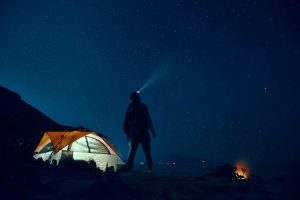 A guest post by Livia from Frank Holman
A guest post by Livia from Frank Holman
You can see people, animals, and objects up to 1,000 yards away in a dark using high-quality night vision glasses and scopes. Night vision monocular cameras allow you to take pictures and even videos of objects that you normally can’t see in the dark.
There are two different technologies that are used in night vision equipment. The first is photonics, the light augmentation techniques that is used in typical night vision equipment. It works by measuring small quantities of infrared light reflected off objects and electronically amplifying that radiation into a distinct vivid green image. The second is digital image enhancement, which is a novel technique that captures available light using a digital image scanner but then digitally enhances photographs in color.
Have you ever seen a spy program or film? If that’s the case, you’re probably already spies and operatives using night vision equipment. Infrared goggles are the name for these devices. How well do they function? If you have any reservations regarding the effectiveness of infrared sensors, they are quite effective. The good infrared binoculars can allow consumers to just see over 200 yards out on a cloudy or moonless night.
It may surprise you to realize that not all light can be seen. The term “illumination” consists of different types of lights that people have seen. The spectrum of human vision does not include the infrared or ultraviolet frequencies, but these can be used in night vision.
What do night vision goggles look like also how do they work? The ones you use will determine this. In binoculars, there are two sorts of technology. The normal and infrared vision are the two.
The light that already exists is intensified via image augmentation. The process of examining photos is substantially simplified as a result of this. There are glimmers of optimism even on the darkest nights. It’s possible that some of this light is thermal, which itself is invisible to mammals. Night vision goggles employ image-enhancing technologies to absorb all different lighting.
Thermal imaging is another type of night eye tracking. Radiative cooling is a sort of heat that humans, like many other hot objects, release. Glasses with electronic ballasts collect thermal radiation. You can get a glimpse of what’s going over here in the dark the said way. This is defined by the amount of heat generated by the items.
Infrared video surveillance cameras are important when attempting to recognize people in the dark. In low-light circumstances, it is more effective. A lot of night vision goggles employ an image-enhancement technique.
In the military and the police, night vision equipment has a range of applications. It may be used to locate persons in the dark. It can also be used for surveillance and orientation. At night, night vision can be used for hunting and spotting animals.
Have you ever seen a photograph that was taken in low light? You’ve undoubtedly shown that it’s lighting green if that’s the case. Green images are seen on the displays of infrared sensors. Because human vision is better suited to staring at green images for extended periods, this is the case.
Have you ever been in a position when you needed to see well in the dark? That’s something night vision goggles can help with! They’re used by more than just spies and fighters. Ordinary folks wear night-vision goggles for several purposes. Maybe you’ll be able to try on a pair for yourself one day!
Many types of digital night vision equipment may be connected to other devices, such as still or video cameras, to allow for remote viewing in addition to direct viewing through the LCD screen. SD cards, USB drives, and other storage devices can be used to save digital night vision signals. Some digital night vision systems include Wi-Fi capability, enabling easy sharing and live-streaming of videos and photographs to cellphones, computers, and other devices.
Digital technology has revolutionized the night vision industry. Each CMOS sensor generation has produced better photographs at a lower cost. Rather than the conventional glowing green visuals, much high-end digital night vision equipment now shows color images.
Applications of Night Vision Technology
Target acquisition innovation is found in a variety of devices, many of which are intended to improve eyesight in low-light or nighttime situations. Scopes are the most common consumer application of evening vision technology. A scope is a telescopic sighting device that enables you to see far away objects. Scopes can be standalone (handheld) or mounted on weapons such as rifles. Village (one eyepiece) or stereoscopic (two eyepieces) motion detection scopes are available (two eyepieces for a stereoscopic image).
Night vision binoculars are quite famous. Consider these sunglasses to be a pair of binoculars installed on a headband or helmet. Because goggles are worn rather than passed, you can use your hands for other things. They’re ideal for wandering about it at night or in dim light.
ShareMAR




About the Author:
I am a cybersecurity and IT instructor, cybersecurity analyst, pen-tester, trainer, and speaker. I am an owner of the WyzCo Group Inc. In addition to consulting on security products and services, I also conduct security audits, compliance audits, vulnerability assessments and penetration tests. I also teach Cybersecurity Awareness Training classes. I work as an information technology and cybersecurity instructor for several training and certification organizations. I have worked in corporate, military, government, and workforce development training environments I am a frequent speaker at professional conferences such as the Minnesota Bloggers Conference, Secure360 Security Conference in 2016, 2017, 2018, 2019, the (ISC)2 World Congress 2016, and the ISSA International Conference 2017, and many local community organizations, including Chambers of Commerce, SCORE, and several school districts. I have been blogging on cybersecurity since 2006 at http://wyzguyscybersecurity.com